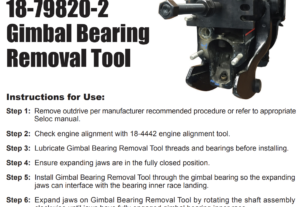If you’re a DIY enthusiast or a professional electrician, you know that stripping wires is an essential part of any electrical project. But let’s face it – using the wrong tool can make this task frustrating and time-consuming. That’s where strip tools come in handy.
In this guide, we’ll take a look at everything you need to know about strip tools – from what they are and how they work to the different types available on the market. So, grab your wire stripper and let’s dive in!
What is a Strip Tool?
A strip tool, also known as a wire stripper, is a specialized tool used for removing insulation from wires. It works by clamping down on the wire and pulling off the insulation without damaging the conductor inside.
Strip tools come in different shapes and sizes, ranging from handheld manual strippers to automatic machines that can handle large volumes of wires. Some even have additional features such as crimping or cutting capabilities.
Why Use Strip Tools?
Using strip tools has several advantages over other methods of wire stripping. First and foremost, it saves time and effort. With a proper strip tool, you can easily remove insulation from wires without having to use a knife or scissors.
Another advantage of using strip tools is that it reduces the risk of damaging the wire itself. When using other methods like knives or scissors, there’s always a chance of accidentally cutting into the conductor inside. This can lead to shorts or other electrical problems.
Types of Strip Tools
There are several types of strip tools available on the market today. Here are some of the most common ones:
1. Manual Stripper
Manual strippers are handheld tools that require physical force to remove insulation from wires. They usually have adjustable jaws that allow you to set the depth of cut for different wire sizes.
2. Automatic Stripper
Automatic strippers are electric or battery-powered tools that can strip wires automatically. They usually have a set of blades that rotate around the wire, cutting away the insulation as they go.
3. Combination Tool
Combination tools are versatile tools that combine several functions in one. For example, some combination tools can strip wires, crimp connectors, and cut wires all in one tool.
4. Thermal Stripper
Thermal strippers use heat to melt away the insulation from wires. They’re especially useful for stripping wires with difficult-to-remove insulation like Teflon or Kapton.
How to Use a Strip Tool
Using a strip tool is relatively easy, but there are a few steps you should follow to ensure a clean and safe strip.
Step 1: Choose the Right Size
The first step is to choose the right size of the tool for your wire. Most strip tools have adjustable jaws that allow you to set the depth of cut for different wire sizes. Make sure you choose the right setting before you start stripping.
Step 2: Clamp Down on Wire
Once you’ve chosen the right size, clamp down on the wire using the jaws of the tool. Make sure you grip it firmly but not too tightly – you don’t want to damage the conductor inside.
Step 3: Rotate Tool Around Wire
Next, rotate the tool around the wire while maintaining pressure on it. The blades or jaws of the tool will cut through the insulation, leaving just enough exposed wire for your project.
Step 4: Remove Insulation
Finally, remove the insulation from the wire using your fingers or pliers. Be careful not to damage the conductor inside, especially if it’s made of delicate materials like copper.
Tips for Using Strip Tools
Here are some tips to help you get the most out of your strip tool:
– Always wear safety glasses when stripping wires to protect your eyes from flying debris.
– Use a manual stripper for delicate wires or when working in tight spaces.
– Use an automatic stripper for larger volumes of wire or when you need to strip wires quickly.
– Keep your strip tool clean and lubricated to ensure smooth operation and long life.
– Always test the wire after stripping to make sure it’s still functional.
Conclusion
Using a strip tool is an essential part of any electrical project. With the right tool and technique, you can easily remove insulation from wires without damaging the conductor inside. Whether you’re a DIY enthusiast or a professional electrician, having a good strip tool in your toolbox is a must.
So, which type of strip tool is right for you? Consider your needs, budget, and level of experience before making a purchase. And remember – always practice safety first when working with electricity.
References:
1. Wire Stripper, Wikipedia, https://en.wikipedia.org/wiki/Wire_stripper
2. How to Strip Wires (Without a Wire Stripper), The Spruce Crafts, https://www.thesprucecrafts.com/how-to-strip-wires-2740059
3. Best Wire Strippers: Top 10 Manual & Automatic Tools Reviewed, Pro Tool Reviews, https://www.protoolreviews.com/buying-guides/best-wire-strippers/53509/




